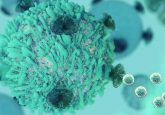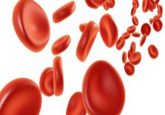Mechanisms of melanoma resistance to BRAF+MEK inhibitors revealed

Researchers at the UCLA Jonsson Comprehensive Cancer Center (CA, USA) have discovered the mechanism underlying resistance to BRAF+ MEK inhibitor combination therapy in melanoma patients following initial tumor shrinkage. The study was published online in the journal Cancer Cell.
In the USA, approximately 70,000 new cases of melanoma are diagnosed each year and an estimated 50% of patients with metastatic melanoma have a BRAF mutation. BRAF+MEK inhibitor therapy is a combination treatment designed for these melanoma patients that has recently been approved by the US FDA.
In this 2-year study, 43 tumor samples from 15 patients were taken prior to prescribed BRAF+MEK inhibitor combination therapy. Initially, all participants benefited from the therapy, but experienced relapses after a period of time due to drug resistance. Tumor samples were also obtained after the patients developed resistance to the therapy and their disease relapsed.
In-depth analysis of the biopsied tumors was then carried out to examine the patient-derived genetic material, providing information on how melanoma cells rewire their growth circuitry to resist BRAF+MEK inhibitor therapy.
The team concluded that melanoma cells resist the BRAF+ MEK inhibitor combination therapy by developing atypical mutations in key cancer genes. These signature genetic mutations not only mark the presence of drug-resistant melanoma cells, they also enlighten scientists on the potential methods to switch them off.
Roger Lo, lead investigator of the study (Jonsson Comprehensive Cancer Center) , commented: “We need to find ways to go beyond the BRAF+MEK drug combination, by possibly finding a third drug, or alter how we prescribe the combo of drugs. The idea is to eventual suppress melanoma drug resistance even before it arises.”
Co-author of the study Antoni Ribas (Jonsson Comprehensive Cancer Center) further commented: “In most cases, melanoma eventually becomes resistant. We now understand the molecular basis of the resistance mechanisms, which leads to the planning of new treatment approaches to disable these mechanisms.”
Lo and Ribas’ previous collaborations have provided critical insights into drug resistance in melanoma, with one key study examining vemurafenib resistance. Their studies have led to the development of the current BRAF+MEK inhibitor combination therapy.
Lo hopes this new study will lead to more effective therapies for melanoma patients: “If we understand how a disease fights your therapy, then we can start to design more effective treatment strategies.”
Source: Moriceau G, Hugo W, Hong A et al. Tunable-Combinatorial Mechanisms of Acquired Resistance Limit the Efficacy of BRAF/MEK Cotargeting but Result in Melanoma Drug Addiction. Cancer Cell. doi:10.1016/j.ccell.2014.11.018 (2015); UCLA press release




